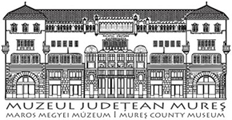Marisia - Maros Megyei Múzeum Évkönyve 33/4. (2013)
Articles
8 S. Berecki Fig. 1. Zoomorphic clay figurine from Tárgu Mure? (drawing: A. Pokorny). The closest analogies can be mentioned from Teleac8 and Lysychnyky.9 In the case of the object from Targu Mure?, the definition of the species was attempted based on the mane of the figurine, although at Lysychnyky in Ukraine such manes are also characteristic for bulls; yet, in their case the species can be defined on the basis of the abdominal anatomical elements. Regarding the number of the zoomorphic representations, at the very end of the 20th century only 82 such objects were known, out of which fourteen were representing porcine.10 Among the 43 clay figurines from Siret, only horses, bovine and a single porcine are reproduced;11 however this later piece has too few details to accept its identification as a porcine. A number of 35 pieces were discovered at Granice?ti, among them horses, bovine and porcine.12 Wild boars are rare representations among the zoomorphic figurines. One of the two clay animals from Tili?ca had the tusk represented.13 35 zoomorphic figurines were found at Teleac and among them three porcine were identified;14 probably two of them represent wild boars.15 Another wild boar is known from Värädia-C/fi/n in Banat.16 Nine representations of porcine are known from Lysychnyky,17 out of which probably only one would be a wild boar. The figurines are very 8 Vasiliev 1986, 80, fig. 1/5-6. 9 Maleev 1996, 366, Abb. 1/7. Later, the same author defined the same figurine as a bull (Maleev 2007, 67-68, fig. 3); however, in the paper, several classifications can be questioned, since among porcine also ovine can be seen, among bovine maybe some porcine and between the ovine some horses. 10 Ursache 1999, 42. 11 Mare? et al. 2008, 83, 92, fig. 6/11. 12 László 1994, 90, fig. 46-49. 13 Lupu 1989, 60, fig. 26/11,21. 14 Vasiliev 1986, 80, fig. 1/5-6, 2/2; Vasiliev et al. 1991, 68, fig. 27/5-6; 28/2. 15 Horedt et al. 1962, fig. 6/4. 16 Gumä 1993, 189-190. 17 Maleev 2007, 66-67, fig. 2. schematic; the anatomical details which would indicate their species can hardly be recognized. From more distant areas, wild boars were identified among the 40 pieces from Visegrád- Csemetekert/Lepence found in front of a kiln dated to the HaA2B period of the Urnfield culture. Discoveries from the Hallstatt culture are also mentioned from the site - the rest of the figurines were dated to this period -; the site was considered the westernmost point on the distribution map of the eastern type of zoomorphic clay figurines.18 Nonetheless, their parallel to the figurines discovered at Lech inja de Mure? was questioned lately.19 Therefore, even if the majority of the zoomorphic representations are domestic animals,20 sometimes wild ones occur, both types shaped in static position. The pieces from Lechinfa de Mure? were all considered wild animals,21 however in the absence of arguments the affirmation cannot be embraced unreservedly, since the ovine and horses might just as well be domestic. It can be concluded that among the zoomorphic representations of the Early Iron Age only wild boars represent the wildlife, while some of the other representations, such as ovine, bovine or horses cannot be assuredly categorized as domestic or wild animals. Only occasionally the sex of the animals is represented. In the case of porcine, the figurine from Siret was considered a male;22 one of the figurines from Teleac a female,23 while the two wild boars from Lechin^a de Mure? were seen as males.24 Regarding the available archaeozoological data of the period, wild boar bones of seven 18 Gróh 1984, 56, Abb. 4/1. 19 Gróh 2009, 25-26, 29-30. 20 Vasiliev 1986, 80; László 1994, 90; László 2001, 307; Ardeu - Balos 2003,184. 21 Sírbu 1987, 108. 22 Mare? et al. 2008, 92, fig. 6/11. 23 Vasiliev 1986, 80, fig. 1/6. 24 Ursache 1999, 43.
